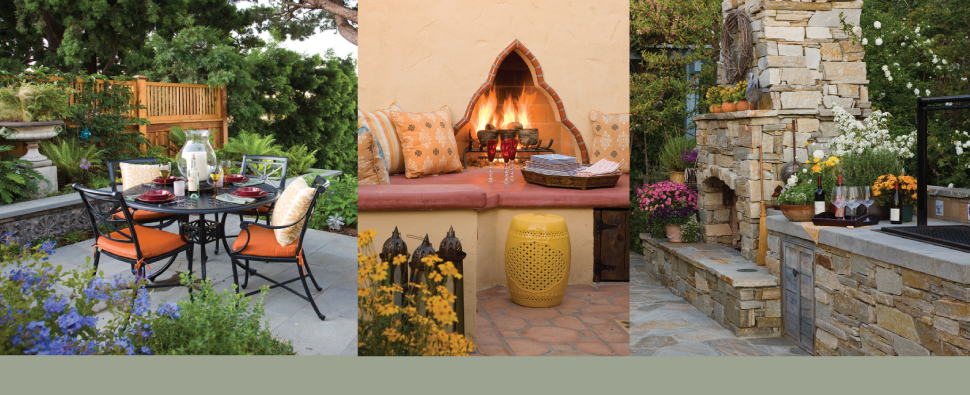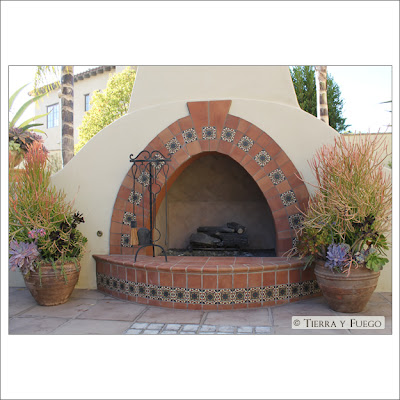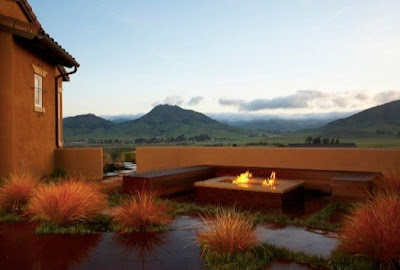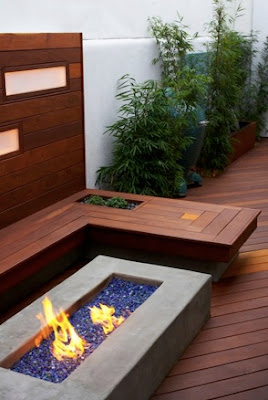 |
| Lavendula ‘Hidcote’ |
I love the idea of having edible plants in the landscape, but only if they are really really easy to grow. I work a lot and when I get home, I want to be able to cook with the plants in my garden every night, but I only want to pay attention to them about once every two weeks for about an hour or so. You’ll need some kind of automatic irrigation to pull that off (I use drippers and soaker hoses). With that in mind, here are a few of my favorite edibles and what I like to do with them:
1) Lavender: Easy to grow, drought tolerant. Ever cooked with it? It makes everything taste more French to me! I chop it very fine and blend it with rosemary and thyme and toss it onto home fries.
2) Oregano: Easy, low growing, drought tolerant. Add it to homemade spaghetti sauce. Or try it instead of basil in a Caprese salad.
 |
| Origanum (oregano) |
 |
| Rosemary |
3) Rosemary: Easy, low growing, drought tolerant (sensing a trend here?) I love rosemary on lamb. Combine it with garlic, olive oil, lots of salt and a little pepper and marinate the lamb for as long as you can and then throw it on the grill.
4) Salvia (Sage): Easy, low growing, drought tolerant and some of them are so colorful! Salvia tricolor is one of my favorites for its fun foliage color. I love Sage with butternut squash. Add it to brown butter and coat butternut squash or butternut squash ravioli with it.
5) Strawberries: these make a good groundcover in slightly shady areas. Its tough to beat the bugs and critters to the strawberries, but its worth the effort when you get one! Try tossing the sliced strawberries with a few drops of balsalmic vinegar (just a few drops!) and then stick them in the fridge for 30 minutes. It will bring out the sweet sunny flavor without adding sugar.
6) Kumquat: these are adorable tiny trees that produce a super tart citrus fruit. They are hard to eat straight but try them cooked instead. I like them with game birds like Game Hens or Duck.
7) Artichoke: ever seen one growing? They are a lovely, startling plant to look at. A little spikey, very silvery. The artichokes, if left unpicked, become gorgeous purple thistle flowers. But why would you let them do that when they are so yummy? I steam them for 45 minutes and make a dipping sauce from 1/4 cup chicken stock, a half tablespoon of melted butter, juice from half a lemon and a little finely chopped garlic.
 |
| Kumquat |
 |
| Salvia tricolor |
 |
| Fragaria (strawberry) |
 |
| Cynara (artichoke) |
 |
|
|
| Thymus praecox |
8) Thyme: This is one of my favorite favorites. It is a groundcover. It makes joyful tiny pink flowers in the spring. The rest of the year it stays green with very little water. I like it in so many dishes. One of my favorites is with Tilapia. In a big frying pan, combine 2 cups of chicken broth, 1/2 cup of apple cider vinegar, lots of fresh thyme and some garlic. Bring it to a boil. Gently place the Tilapia filets into the boiling liquid. It will help to keep the fish firm but moist and will infuse them with flavor.
9) Apple ‘Anna’: did you know that there is an apple that grows really well in San Diego? Anna doesn’t require very many chill hours to produce tasty fruit. They make great eating as fresh apples (they are a lot like a Pink Lady), but sadly don’t cook well.
10) Meyer Lemon: to me these are the taste of homeade lemonade. Warm and sweeter than the lemons you’ll find in the grocery store, these are easy to grow if you know one trick: you’ll need to buy them some Citrus/Avocado fertilizer. I prefer them as semi-dwarfs because the dwarfs don’t produce enough fruit and the full sized ones become too big for my urban garden. I use lemon pretty much daily in my cooking! Here is one favorite: marinate chicken thighs overnight in 1 cup soy sauce, 1/2 cup Worcestershire sauce, juice from 1 lemon, 1/4 cu olive oil, 3 cloves finely chopped garlic. Take them out of the marinade and coat in bread crumbs. Bake them for 45 minutes. Make more than you think you’ll eat. Seriously- lots more.
11) Tarragon: This isn’t a very common herb but oh it should be! I find it easy to grow, but hard to find in the nurseries. If you find one, buy it! It makes everything taste more elegant with its slightly licorice flavor. Try this recipe for a roast chicken: loosen the skin on the breasts of a whole chicken. Under the skin, place a mixture of tarragon (2 teaspoons finely chopped), 1 tablespoon melted butter, one clove of finely chopped garlic, a dash of salt and pepper. Pour boiling water over the bird to tighten the skin (if you’ve never done this you really should try it. Its fun to watch the skin tighten and it makes the chicken more crispy). Make sure to get all of the water out of the pan. Bake at 375 for 45 minutes to an hour. I like it so much you get a bonus recipe for pork. Cut a pork tenderloin into thick rounds. Salt and pepper all sides and brown them in a frying pan. Reduce the heat to very low. To the pan, add 2 cups chicken stock, a whole bag of mini carrots, and 2 cloves of finely chopped garlic. Put a lid on the pan and cook until the rounds are just barely firm when you push on them with a spoon. Turn off the heat entirely. Add 1 cup of sour cream. Do this carefully- if the pan is too hot it will curdle. Add 1 tablespoon chopped tarragon. Salt and pepper to taste and serve immediately. The flavors will be so unusual and yummy that a dinner party will scarf all of this down before you can blink.
 |
| Apple ‘Anna’ |
 |
| Lemon ‘Meyer’ |
 |
| Tarragon |
Sage Outdoor Designs is a San Diego landscape design firm. Kate
Wiseman, the Principal, has been a San Diego landscape designer
for the past ten years. Find out more at www.sageoutdoordesigns.com











